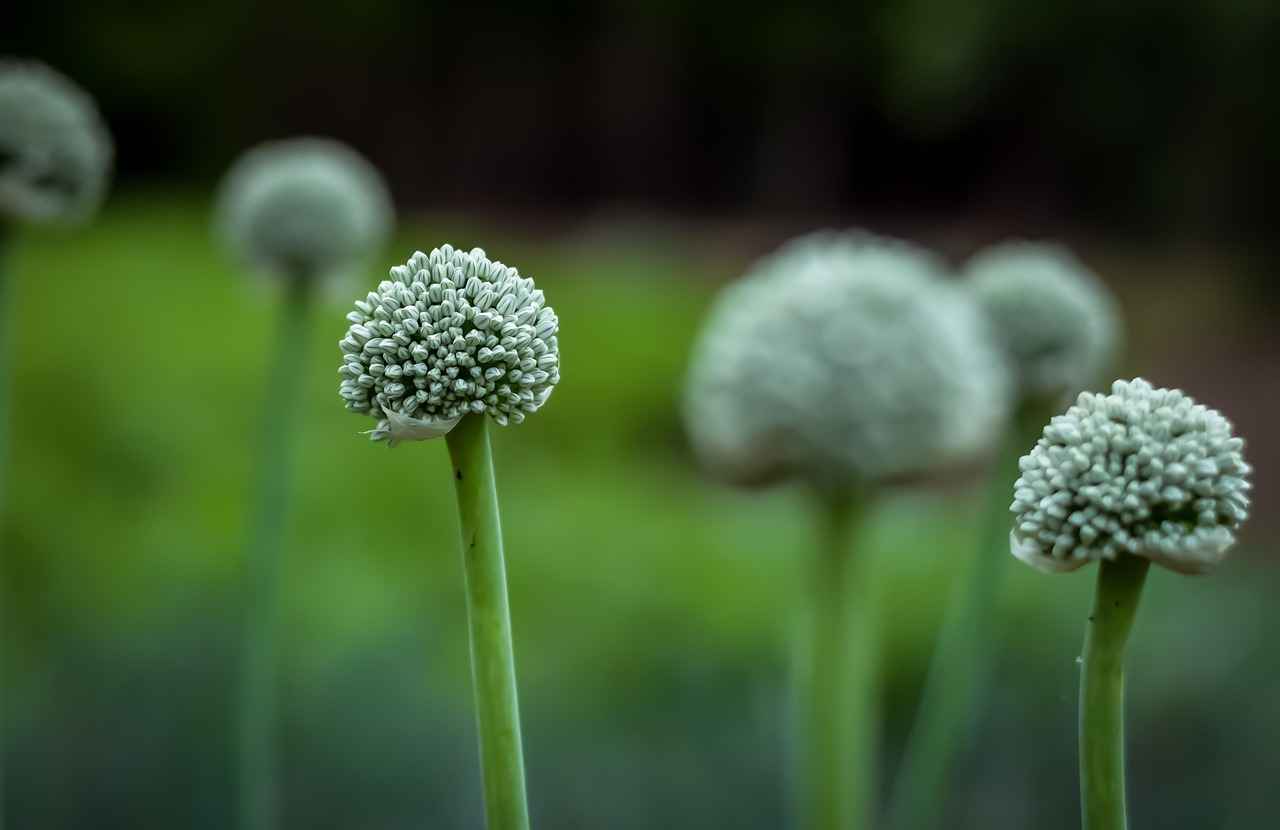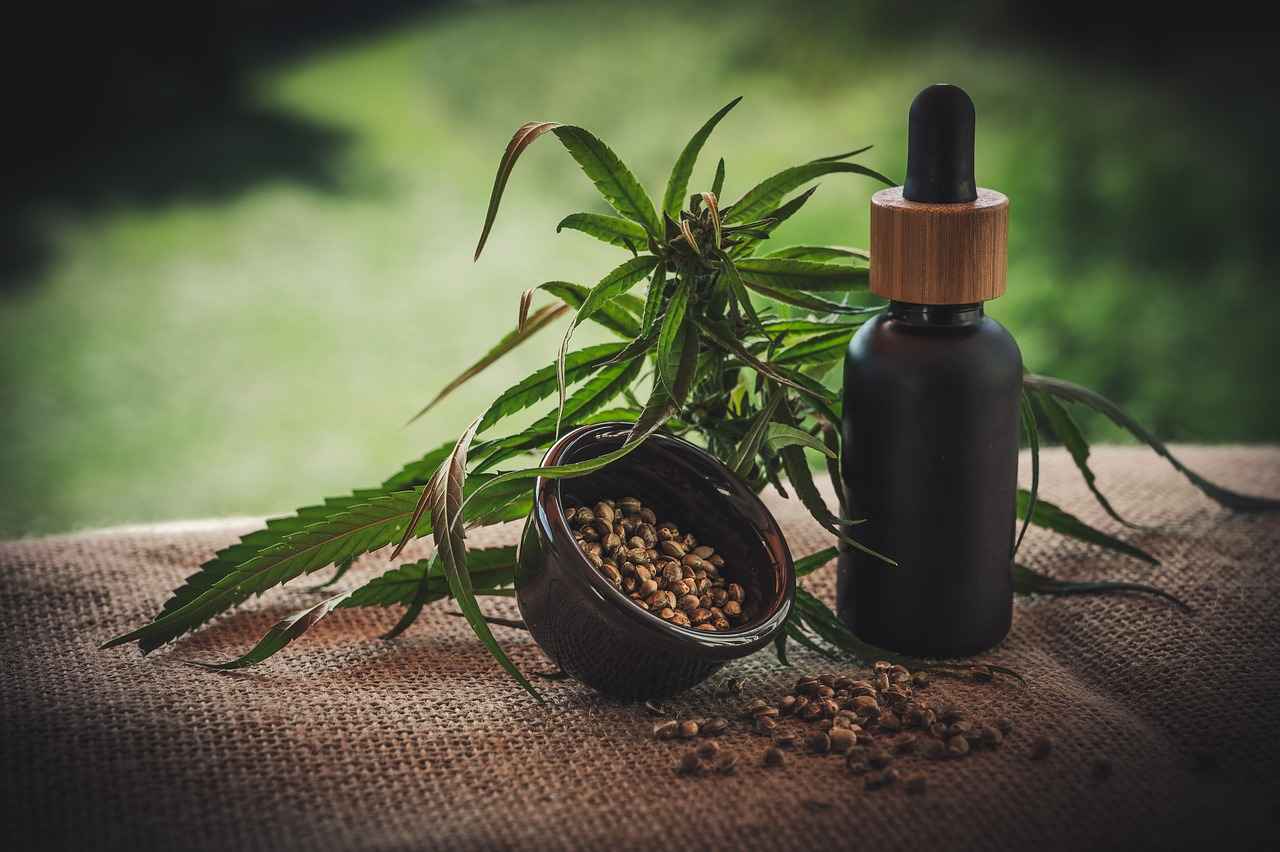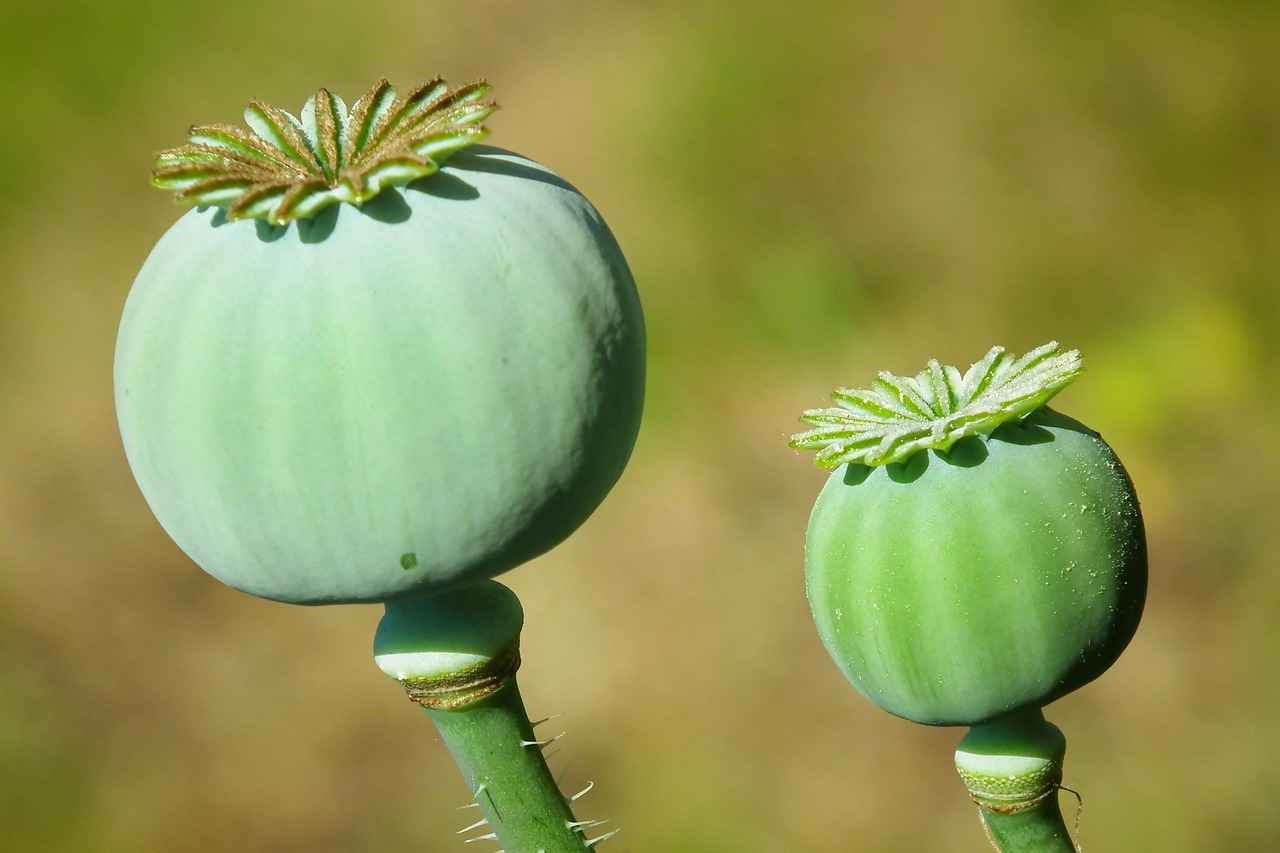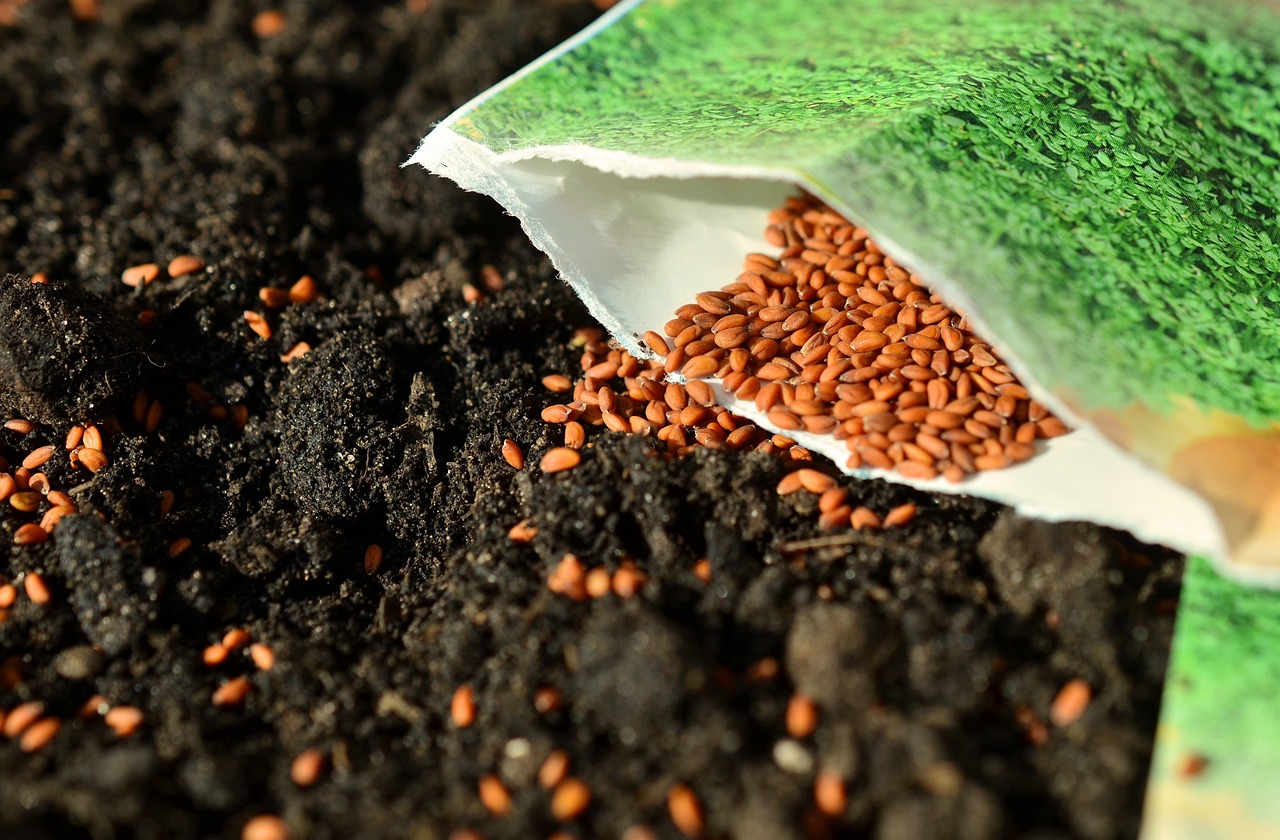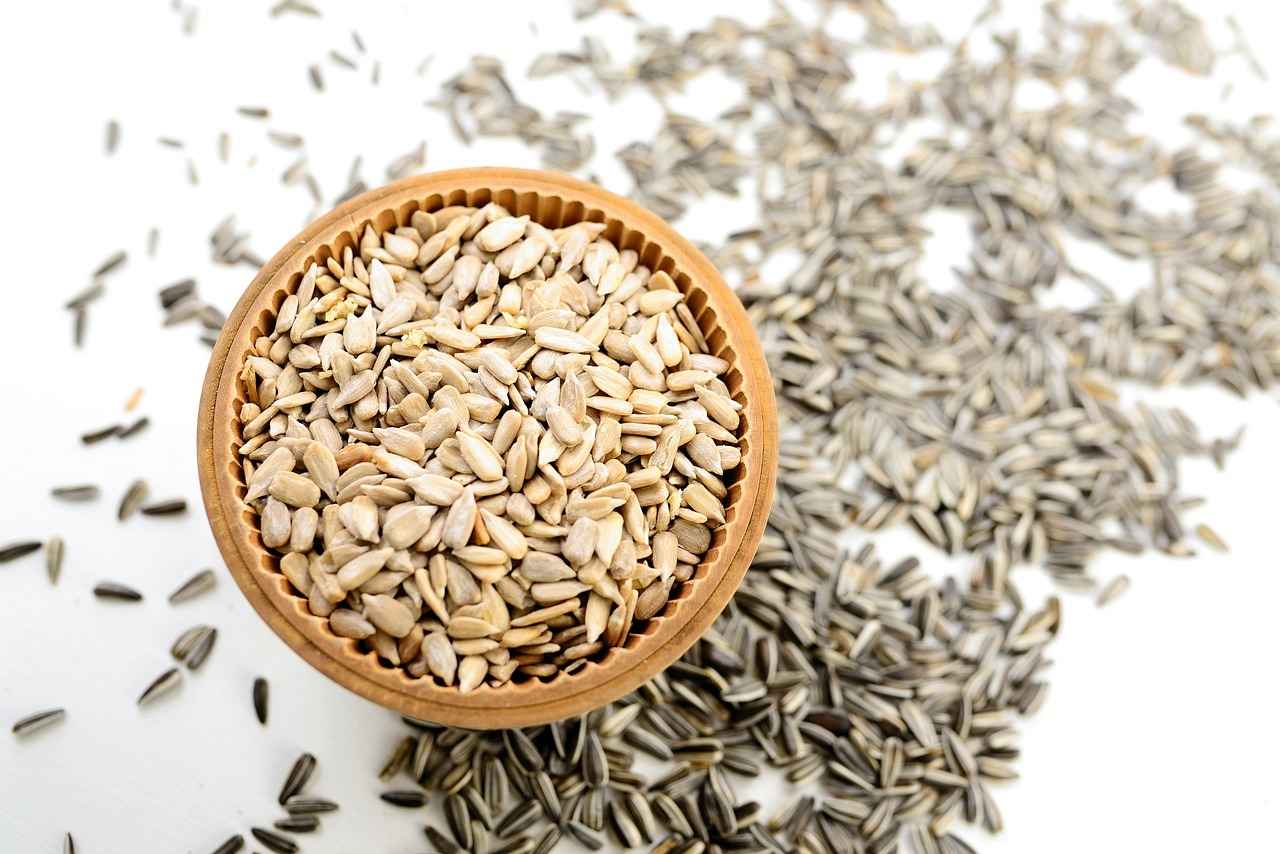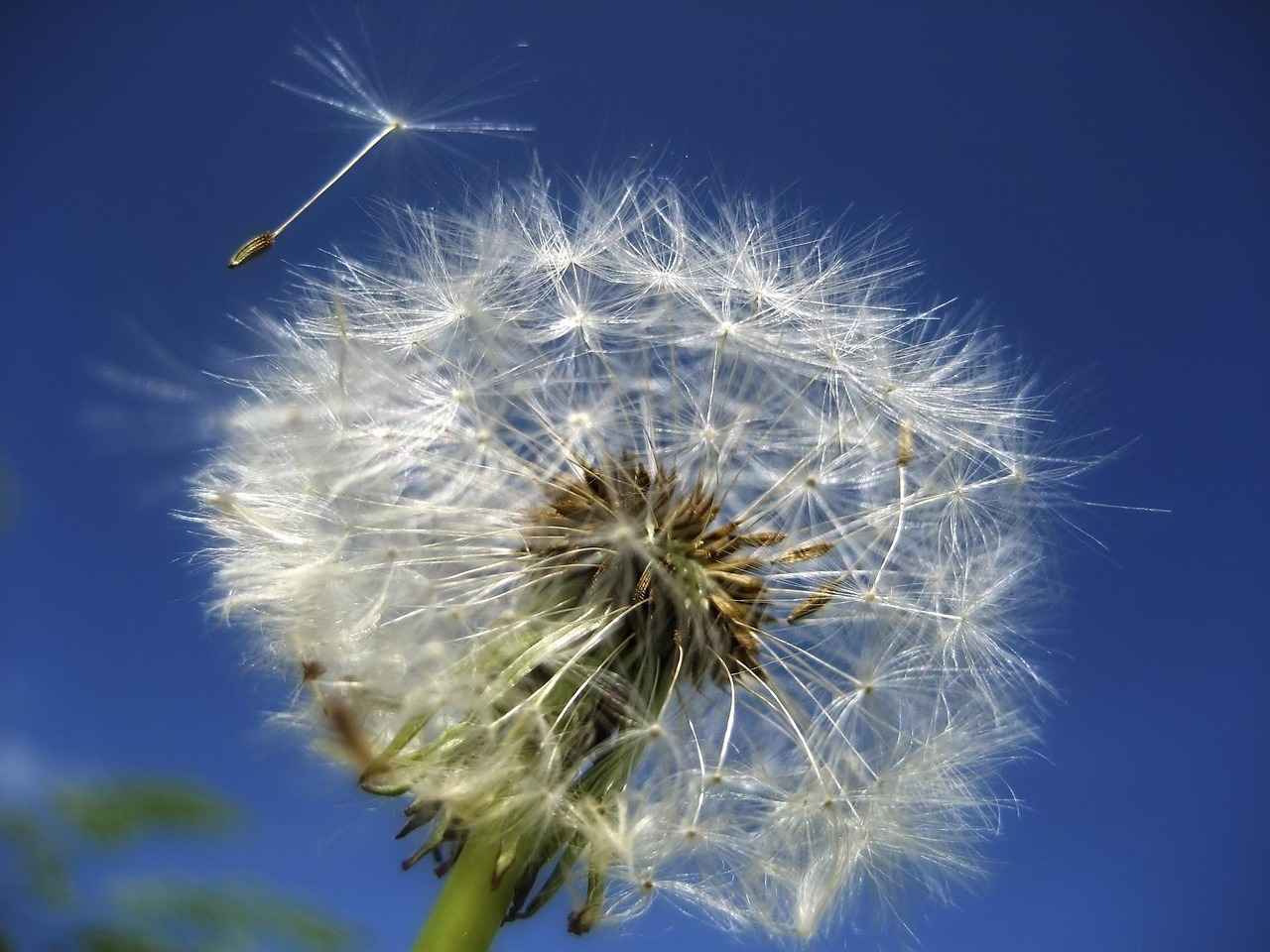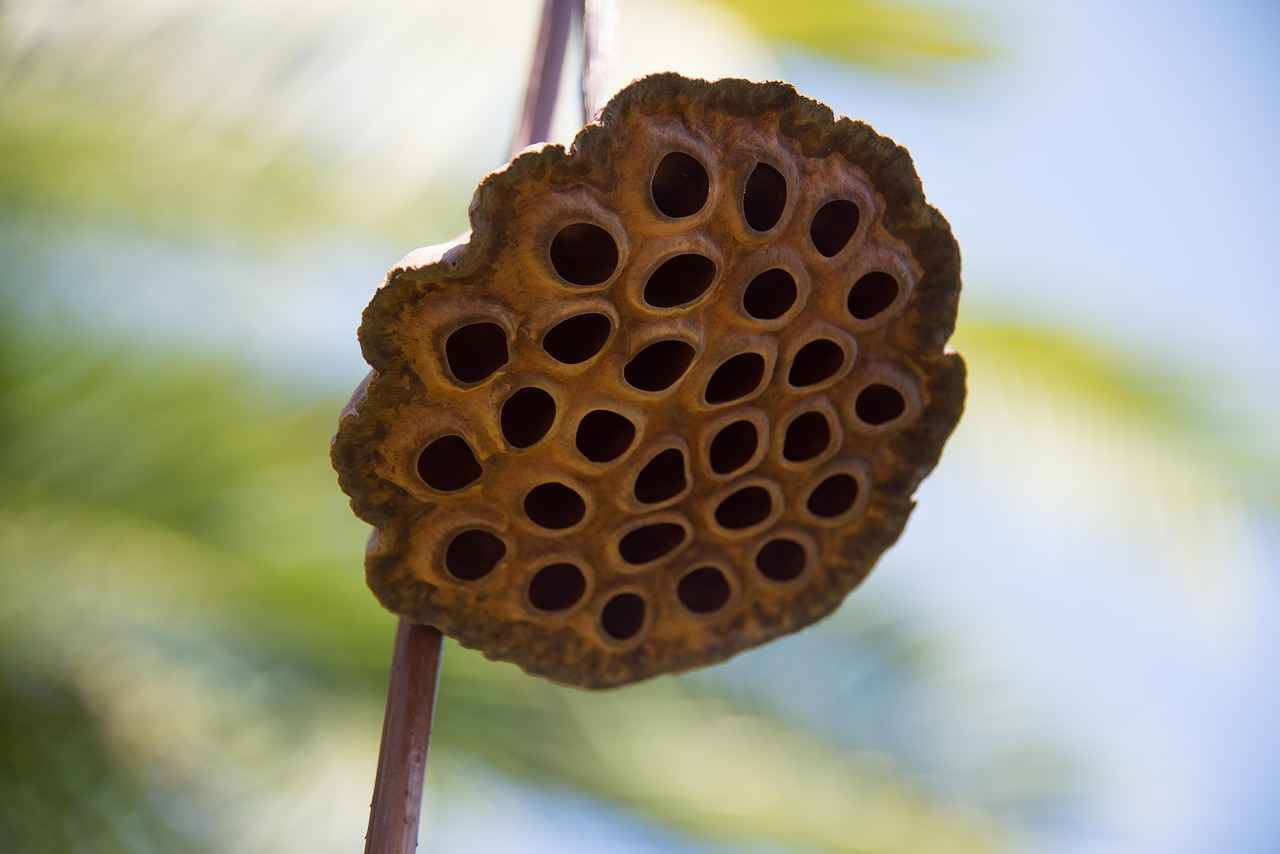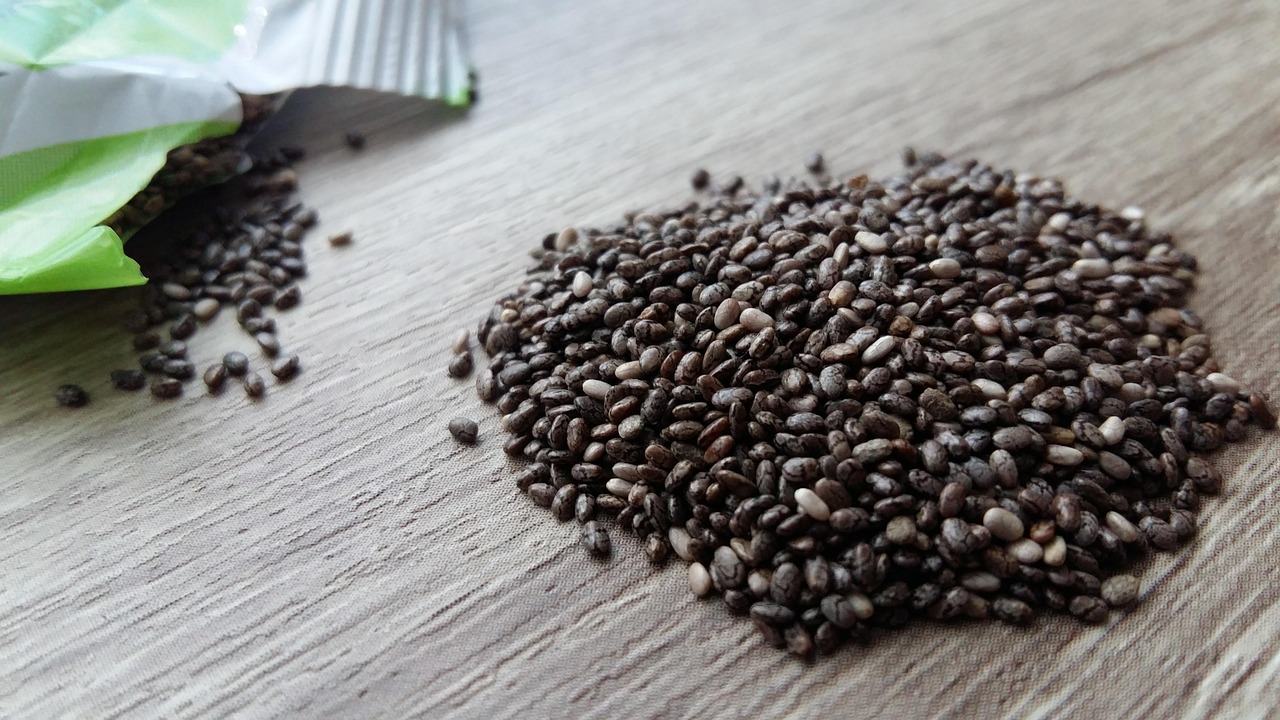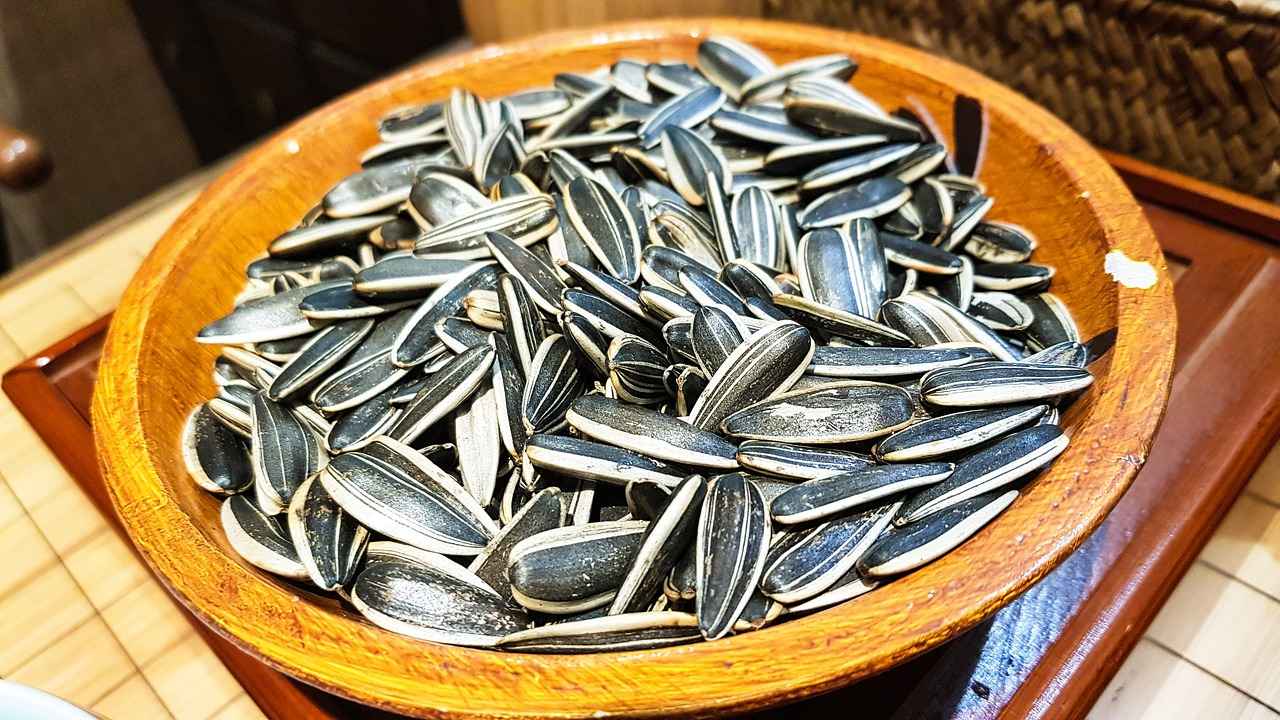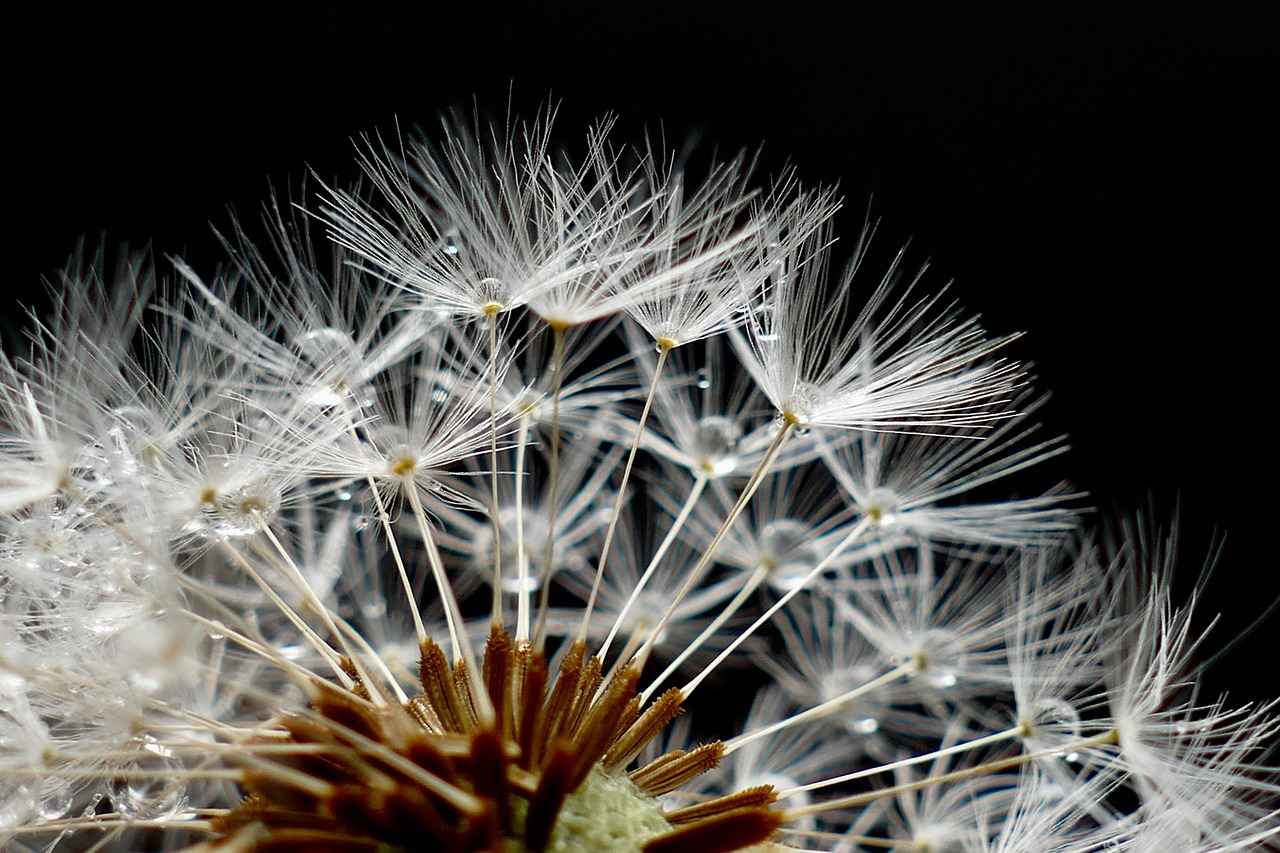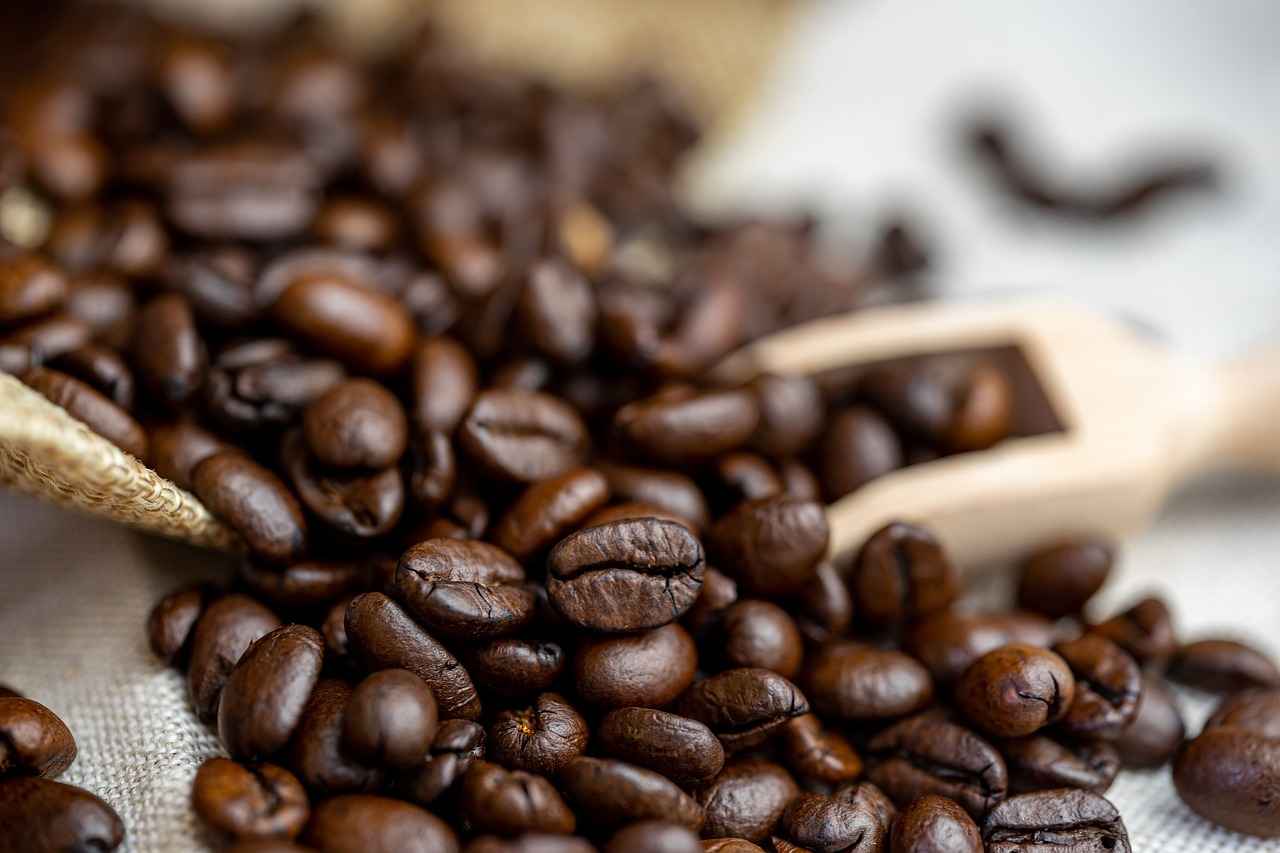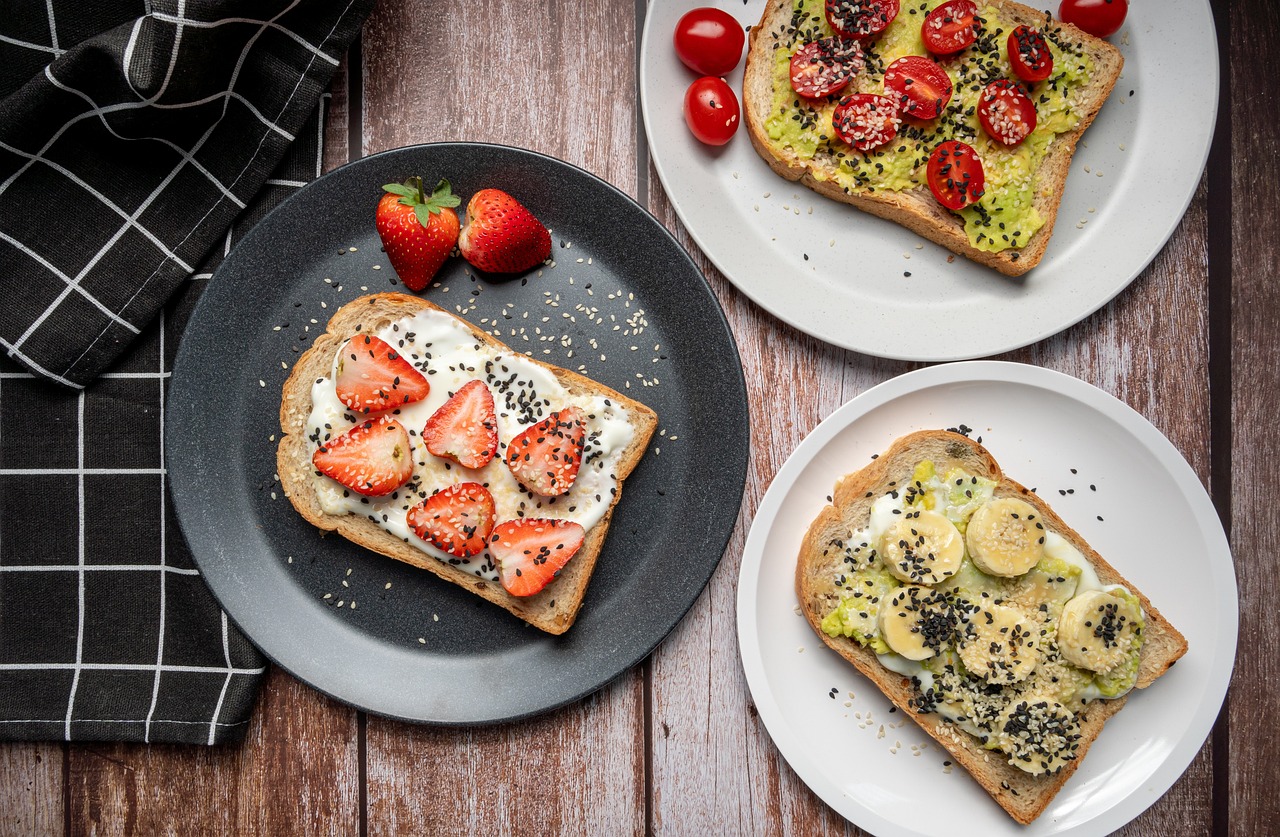This article explores the numerous health benefits of consuming chia seeds, their nutritional profile, and practical ways to incorporate them into your diet for optimal wellness.
What Are Chia Seeds?
Chia seeds are small, black or white seeds derived from the Salvia hispanica plant, which is native to Mexico and Guatemala. These tiny seeds are packed with nutrients, making them a popular superfood. Their growing popularity can be attributed to their impressive health benefits and versatility in various culinary applications.
Why Should You Drink Chia Seed Water?
Drinking chia seed water is not just a trend; it provides hydration along with a boost of essential nutrients. This combination can enhance digestion, promote weight loss, and improve overall health, making it a favorite among health enthusiasts.
How to Prepare Chia Seed Water?
Preparing chia seed water is incredibly simple. Just mix 1 tablespoon of chia seeds with 10 ounces of water and let them soak for about 30 minutes. This soaking process allows the seeds to expand and form a gel-like consistency, which enhances the drink’s nutritional value.
Flavoring Your Chia Seed Water
To make your chia seed water more enjoyable, consider adding natural flavors. Lemon, lime, or even a few slices of cucumber can improve the taste while providing additional vitamins and antioxidants.
Health Benefits of Drinking Chia Seeds
- Rich in Omega-3 Fatty Acids: Chia seeds are an excellent source of omega-3s, which are essential for heart health.
- High Fiber Content: They contain a significant amount of dietary fiber, which aids in digestion and promotes a feeling of fullness.
- Protein Source: Chia seeds provide a plant-based protein option, making them suitable for vegetarians and vegans.
Are Chia Seeds Good for Weight Loss?
Yes, chia seeds can be a beneficial addition to a weight loss regimen. Their high fiber content promotes satiety, helping you feel fuller for longer. Incorporating chia seeds into your meals can potentially reduce overall calorie intake.
How Chia Seeds Aid in Appetite Control
The gel-like consistency of chia seeds when soaked in water can slow digestion, leading to a gradual release of energy. This can help control hunger pangs throughout the day and support weight management efforts.
Incorporating Chia Seeds into Your Diet
There are countless ways to include chia seeds in your meals. Here are some practical suggestions:
- Add them to smoothies for an extra nutrient boost.
- Sprinkle them on salads for added crunch and nutrition.
- Mix them into yogurt or oatmeal for a delicious breakfast.
Are There Any Side Effects of Chia Seeds?
While chia seeds are generally safe for most individuals, some may experience digestive discomfort if consumed in large quantities. It is essential to understand the right serving size to avoid potential side effects.
Recommended Serving Size
A typical serving size of chia seeds is about 1-2 tablespoons. This amount provides significant health benefits without overwhelming your digestive system.
Who Should Avoid Chia Seeds?
Individuals with specific medical conditions, such as those with swallowing difficulties or gastrointestinal issues, should consult a healthcare professional before adding chia seeds to their diet.
How to Store Chia Seeds for Maximum Freshness?
Proper storage is crucial for maintaining the freshness and nutritional value of chia seeds. Keeping them in a cool, dark place can prevent spoilage and extend their shelf life.
Best Practices for Storing Chia Seeds
- Store chia seeds in an airtight container to preserve their quality.
- Keep them in a pantry or refrigerator, avoiding exposure to moisture and heat.
How Long Do Chia Seeds Last?
When stored correctly, chia seeds can last for up to two years. Regularly checking their appearance and smell can help ensure their freshness before use.

What Are Chia Seeds?
Chia seeds are small, oval-shaped seeds that come from the Salvia hispanica plant, which is native to Mexico and Guatemala. These seeds have been consumed for centuries, dating back to ancient civilizations, where they were valued for their nutritional benefits. In recent years, chia seeds have gained immense popularity in the health and wellness community, largely due to their impressive nutritional profile and versatility.
Chia seeds are remarkably nutrient-dense, offering a concentrated source of essential nutrients in a tiny package. They are rich in omega-3 fatty acids, which are crucial for heart health, and provide a substantial amount of dietary fiber, protein, and various vitamins and minerals. A single ounce (about 28 grams) of chia seeds contains:
| Nutrient | Amount per 28g |
|---|---|
| Calories | 138 |
| Protein | 4.7g |
| Fat | 8.6g |
| Carbohydrates | 12g |
| Fiber | 10.6g |
| Calcium | 18% of the Daily Value |
| Magnesium | 30% of the Daily Value |
These tiny seeds are also packed with antioxidants, which help combat oxidative stress and inflammation in the body. The unique ability of chia seeds to absorb water and expand in size makes them an excellent addition to various recipes, ranging from smoothies to baked goods.
The surge in popularity of chia seeds can be attributed to several factors:
- Health Benefits: Their rich nutrient profile contributes to numerous health benefits, including improved heart health, weight management, and digestive health.
- Versatility: Chia seeds can be easily incorporated into a variety of dishes, making them a convenient choice for enhancing nutrition.
- Easy Preparation: They require minimal preparation, often just soaking in water or mixing into foods.
Integrating chia seeds into your daily meals is simple and can be done in various ways:
- Chia Seed Pudding: Combine chia seeds with your choice of milk (dairy or plant-based) and let them soak overnight for a delicious breakfast or snack.
- Smoothies: Add a tablespoon of chia seeds to your favorite smoothie for an extra nutrient boost.
- Salads and Bowls: Sprinkle chia seeds on top of salads or grain bowls for added crunch and nutrition.
With their numerous health benefits and ease of use, chia seeds are a powerful addition to any diet. Whether you are looking to enhance your nutrition or simply try something new, these tiny seeds can provide a wealth of benefits.
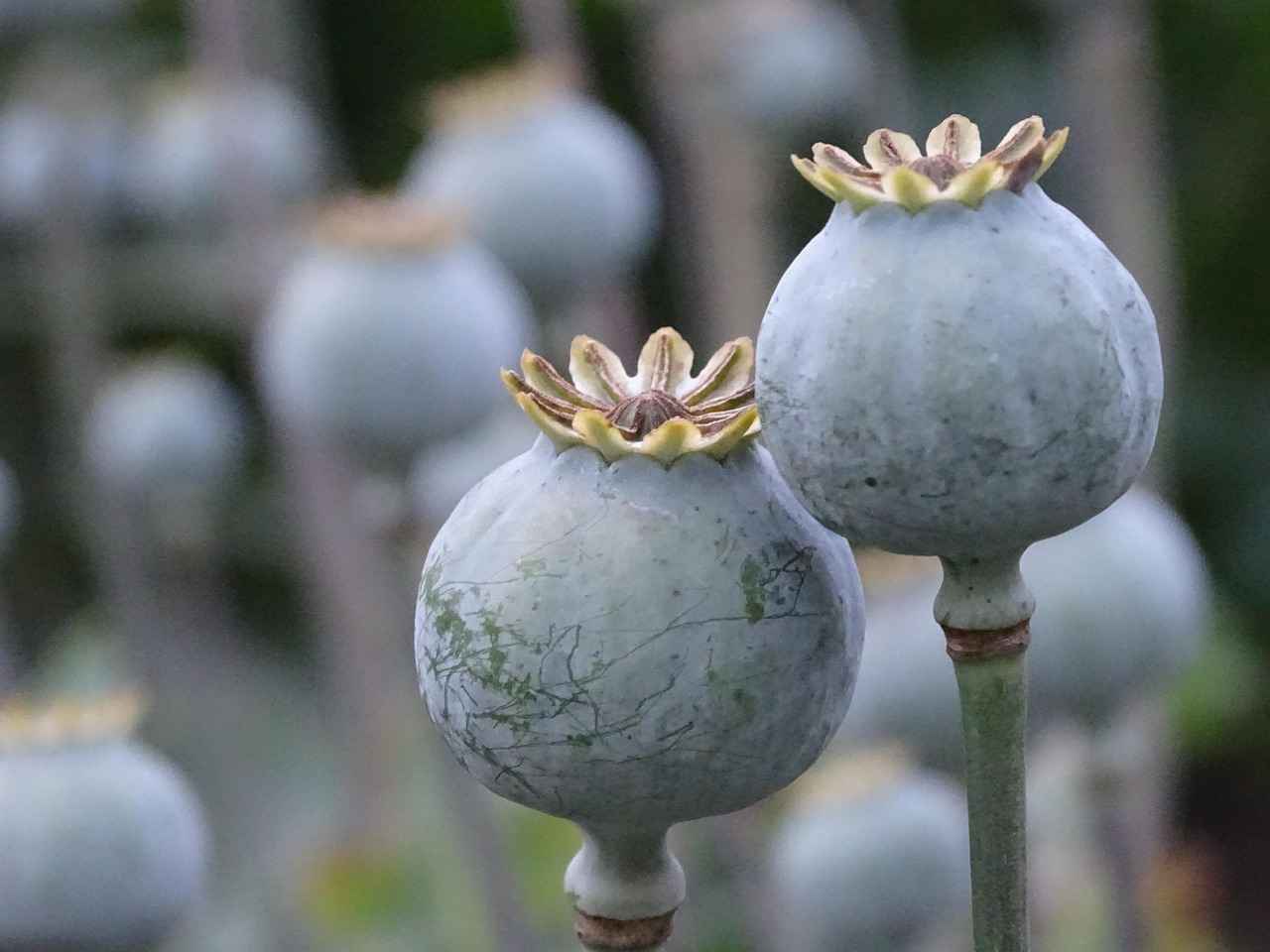
Why Should You Drink Chia Seed Water?
Chia seed water has gained immense popularity among health enthusiasts for its remarkable benefits. Drinking chia seed water not only provides hydration but also delivers a wealth of essential nutrients that can significantly enhance your health. This article will delve into the reasons why incorporating chia seed water into your daily routine can be a game-changer.
Chia seeds are rich in omega-3 fatty acids, fiber, and protein, making them a powerhouse of nutrition. When soaked in water, these tiny seeds expand and form a gel-like consistency, which not only adds texture but also enhances their health benefits. Hydration is crucial for overall well-being, and chia seed water offers a refreshing way to meet your daily fluid intake while providing vital nutrients.
The high fiber content in chia seeds plays a critical role in promoting digestive health. When consumed, chia seeds absorb water and swell, which helps to regulate bowel movements and prevent constipation. This gel-like texture can also help to soothe the digestive tract, making it easier for your body to process food efficiently.
Many people are turning to chia seed water as part of their weight loss journey. The fiber in chia seeds promotes a feeling of fullness, which can help control appetite and reduce overall calorie intake. By incorporating chia seed water into your diet, you may find it easier to resist unhealthy snacks and maintain a balanced diet.
Preparing chia seed water is incredibly simple. Start by mixing 1 tablespoon of chia seeds with 10 ounces of water. Allow the mixture to sit for about 15-30 minutes, giving the seeds time to absorb the water and expand. This process not only enhances the drink’s nutritional profile but also improves its taste and texture.
While chia seed water is nutritious on its own, adding flavor can enhance the experience. Consider incorporating fresh fruits like lemon, lime, or berries for a burst of flavor and additional vitamins. You can also experiment with herbs such as mint or basil for a refreshing twist.
While chia seeds are generally safe for most individuals, consuming them in excessive amounts can lead to digestive discomfort. It is essential to start with a moderate serving size, typically around 1-2 tablespoons, and gradually increase it as your body adjusts. If you have specific health concerns or conditions, consulting a healthcare professional before adding chia seeds to your diet is advisable.
To maintain the freshness and nutritional value of chia seeds, proper storage is crucial. Keep them in an airtight container in a cool, dark place, such as a pantry or refrigerator. This will help prevent spoilage and extend their shelf life, ensuring that you always have fresh seeds on hand for your chia seed water.
Integrating chia seed water into your daily routine can be both easy and enjoyable. You can drink it first thing in the morning for a refreshing start to your day or enjoy it as a mid-afternoon pick-me-up. The versatility of chia seed water makes it a practical choice for anyone looking to boost their hydration and nutrient intake.
In conclusion, drinking chia seed water offers a multitude of health benefits, from improved digestion to enhanced weight loss support. By incorporating this simple yet effective drink into your daily routine, you can take significant strides toward better health and well-being.
How to Prepare Chia Seed Water?
Preparing chia seed water is not only easy but also a rewarding experience that can significantly enhance your health. The process involves a few simple steps that transform these tiny seeds into a nutrient-rich beverage. Let’s delve into the details of how to prepare chia seed water effectively.
To start, you’ll need chia seeds and water. The basic method is straightforward: mix chia seeds with water and allow them to soak. However, the specifics of this process can impact the final product’s texture and nutritional benefits.
- Choosing the Right Chia Seeds: Opt for organic chia seeds to ensure you are getting a product free from pesticides and additives.
- Measuring the Ingredients: The recommended ratio is typically 1 tablespoon of chia seeds to 10 ounces of water. This ratio allows the seeds to absorb enough liquid, resulting in a pleasant gel-like consistency.
- Mixing: In a jar or glass, add the measured chia seeds to the water. Stir well to prevent clumping. A good mix ensures that each seed has the opportunity to absorb water.
- Soaking: Let the mixture sit for at least 30 minutes. This soaking time allows the seeds to expand and form a gel-like texture, which enhances the drink’s nutritional value.
- Stirring Again: After soaking, give the mixture another stir to break up any clumps that may have formed. This step is crucial for a smooth texture.
Once prepared, chia seed water can be consumed as is, or you can add various flavorings to enhance its taste. Popular options include:
- Lemon or Lime Juice: Adding a splash of citrus not only improves the flavor but also boosts vitamin C content.
- Honey or Maple Syrup: For those with a sweet tooth, a natural sweetener can make the drink more palatable.
- Fruit Infusions: Incorporating slices of fruits like strawberries or cucumbers can elevate the taste and add extra nutrients.
In terms of health benefits, chia seed water is packed with omega-3 fatty acids, fiber, and protein, which contribute to improved digestion, enhanced hydration, and increased energy levels. The gel-like consistency created during soaking can also help with appetite control, making it a valuable addition to your wellness routine.
Overall, the process of preparing chia seed water is simple yet effective in harnessing the numerous benefits of chia seeds. By following these steps, you can easily incorporate this nutritious drink into your daily routine and enjoy its health-promoting properties.
Best Ratios for Chia Seed Water
When it comes to preparing chia seed water, understanding the right proportions is crucial for maximizing its health benefits. The ideal ratio of chia seeds to water is typically 1:10. This means that for every tablespoon of chia seeds, you should use approximately ten tablespoons of water. This ratio ensures that the seeds have enough liquid to absorb, which not only enhances their nutritional value but also improves the drink’s overall palatability.
Chia seeds are known for their ability to absorb liquid, swelling to many times their original size. This absorption creates a gel-like consistency that can be quite appealing when consumed. The 1:10 ratio allows for optimal hydration and nutrient release, making it an effective choice for those looking to incorporate chia seeds into their diet.
To prepare chia seed water, simply mix the seeds with water and let them sit for about 15-30 minutes. During this time, the chia seeds will absorb the water and form a gel. This process not only enhances the drink’s texture but also ensures that you are getting the full range of health benefits that chia seeds offer.
Moreover, if you find the taste of plain chia seed water a bit bland, consider adding natural flavorings. Ingredients like lemon juice, lime juice, or even pieces of fresh fruit can elevate the flavor profile while providing additional vitamins and antioxidants. This can make your chia seed water not only healthy but also enjoyable to drink.
It’s worth noting that while the 1:10 ratio is a good starting point, you can adjust it based on your personal preference. Some may prefer a thicker consistency, which can be achieved by using less water, while others might opt for a thinner drink. Experimenting with these ratios can help you find the perfect balance that suits your taste.
In addition to hydration, drinking chia seed water can offer numerous health benefits. Chia seeds are rich in omega-3 fatty acids, fiber, and protein, contributing to improved digestion and enhanced energy levels. The high fiber content helps with weight management by promoting a feeling of fullness, which can aid in appetite control.
For those looking to incorporate chia seeds into their daily routine, it’s important to start with a moderate serving size. A typical serving of chia seeds is about 1-2 tablespoons. This amount is sufficient to reap the benefits without overwhelming your digestive system.
In conclusion, the 1:10 ratio of chia seeds to water is not just a guideline; it is a fundamental aspect of preparing chia seed water that maximizes its health benefits. By paying attention to this ratio and experimenting with flavors, you can create a delicious and nutritious drink that supports your health and wellness goals.
Flavoring Your Chia Seed Water
Enhancing the flavor of your chia seed water can significantly elevate your drinking experience, making it not only more enjoyable but also more nutritious. Chia seeds have a mild, nutty flavor that can be complemented beautifully with various natural ingredients. By adding fruits and other flavorings, you can transform a simple drink into a refreshing and health-boosting beverage.
One of the most popular ways to enhance chia seed water is by incorporating citrus fruits like lemon and lime. These fruits not only add a zesty kick but also provide a rich source of vitamin C, which is essential for immune function and skin health. The acidity of citrus can also help balance the earthy flavor of chia seeds, making it a delightful drink.
In addition to citrus, consider adding other fruits such as:
- Strawberries: These berries are rich in antioxidants and add a natural sweetness.
- Blueberries: Packed with vitamins and fiber, they enhance both taste and color.
- Pineapple: This tropical fruit brings a refreshing sweetness and aids digestion.
- Mint leaves: Adding mint can provide a cooling sensation, making your drink even more refreshing.
Another excellent option is to infuse your chia seed water with herbal teas. Green tea or peppermint tea can add a unique flavor profile and additional health benefits, such as increased metabolism and improved digestion. To prepare, simply brew your tea, allow it to cool, and then mix it with your soaked chia seeds.
For those who prefer a sweeter touch, consider adding a splash of honey or agave syrup. These natural sweeteners can enhance the flavor without the drawbacks of refined sugars. Just a small amount can make a significant difference in taste.
When preparing your flavored chia seed water, remember to maintain the ideal ratio of chia seeds to water, typically around 1:10. This ensures that the seeds have enough liquid to absorb, creating that desirable gel-like consistency while also ensuring the flavorings are well-distributed throughout the drink.
Lastly, don’t hesitate to experiment with different combinations of flavors. Mixing various fruits and herbs can lead to exciting new tastes that keep your chia seed water interesting. The versatility of chia seeds allows for endless possibilities, catering to individual preferences and dietary needs.
In summary, flavoring your chia seed water not only enhances the taste but also adds a wealth of nutrients. By incorporating fruits, herbs, and natural sweeteners, you can create a delicious and healthful beverage that supports your wellness journey. So, grab your chia seeds and get creative with flavors!
Health Benefits of Drinking Chia Seeds
Chia seeds, often hailed as a superfood, are tiny black seeds derived from the Salvia hispanica plant. These seeds are not only versatile in culinary applications but also serve as a powerhouse of nutrition. When consumed, particularly in the form of chia seed water, they can offer a myriad of health benefits.
Chia seeds are rich in essential nutrients, including:
- Omega-3 Fatty Acids: Vital for heart health and cognitive function.
- Fiber: Aids in digestion and helps maintain a healthy weight.
- Protein: Essential for muscle repair and growth.
- Minerals: Such as calcium, magnesium, and phosphorus, which support bone health.
The high content of omega-3 fatty acids in chia seeds plays a crucial role in reducing inflammation and lowering cholesterol levels. This can lead to improved heart health and a decreased risk of cardiovascular diseases. Regular consumption may help regulate blood pressure and maintain healthy blood vessels.
Chia seeds are an excellent source of dietary fiber, which is essential for maintaining a healthy digestive system. The soluble fiber in chia seeds absorbs water and forms a gel-like substance, which can:
- Promote regular bowel movements.
- Prevent constipation.
- Support gut health by acting as a prebiotic.
Incorporating chia seeds into your diet can aid in weight management. Their high fiber content contributes to a feeling of fullness, which can help control appetite and reduce overall calorie intake. The gel-like texture of soaked chia seeds slows digestion, providing a steady release of energy and helping you avoid unhealthy snacking.
Chia seeds provide a balanced source of carbohydrates, protein, and healthy fats, making them an excellent energy booster. The combination of nutrients helps sustain energy levels throughout the day, making chia seeds a popular choice for athletes and active individuals.
While chia seeds are generally safe for most people, consuming them in excessive amounts can lead to digestive discomfort. It’s crucial to start with a moderate serving size of about 1-2 tablespoons and gradually increase as your body adjusts. Additionally, those with specific health conditions should consult a healthcare professional before adding chia seeds to their diet.
There are numerous ways to enjoy chia seeds:
- Add them to smoothies for an extra nutritional boost.
- Mix them into yogurt or oatmeal for added texture and health benefits.
- Use them as a thickening agent in soups or sauces.
- Incorporate them into baked goods like muffins and bread.
In conclusion, drinking chia seed water and including chia seeds in your diet can lead to significant health improvements. From supporting heart health to enhancing digestion and boosting energy levels, these tiny seeds pack a powerful punch. By understanding their benefits and incorporating them into your meals, you can take a proactive step towards achieving better health.
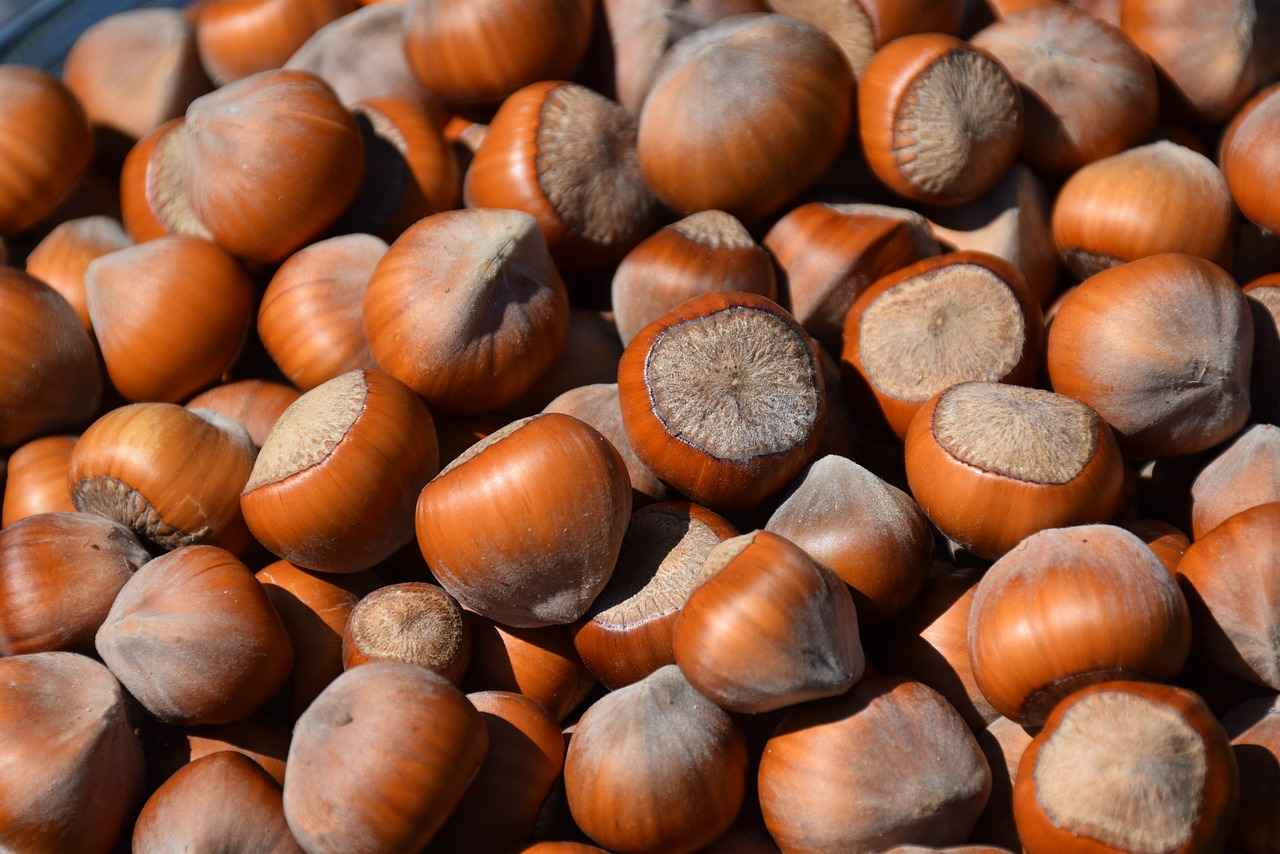
Are Chia Seeds Good for Weight Loss?
Chia seeds have gained significant attention in the health and wellness community, particularly for their potential benefits in weight loss. These tiny seeds, derived from the Salvia hispanica plant, are rich in nutrients and can be a valuable addition to any weight loss plan. But how do they actually help in managing weight? Let’s explore this further.
One of the primary reasons chia seeds are considered effective for weight loss is their high fiber content. Each serving contains about 11 grams of fiber, which plays a crucial role in promoting satiety. When you consume chia seeds, they absorb water and expand in your stomach, creating a gel-like consistency that helps you feel full for a longer period. This can lead to a natural reduction in calorie intake, as you may find yourself less inclined to snack between meals.
The gel-like texture formed when chia seeds absorb water not only slows down digestion but also provides a steady release of energy. This gradual digestion process helps to control hunger pangs, making it easier to resist unhealthy cravings. Research indicates that individuals who incorporate high-fiber foods like chia seeds into their diets often report feeling more satisfied after meals, which can significantly aid in weight management.
Integrating chia seeds into your daily meals is simple and versatile. Here are a few practical ways to include them:
- Smoothies: Add a tablespoon of chia seeds to your morning smoothie for an extra boost of fiber and nutrients.
- Salads: Sprinkle chia seeds on salads for added crunch and nutritional benefits.
- Chia Pudding: Mix chia seeds with your choice of milk or yogurt, let it sit overnight, and enjoy a delicious, filling breakfast.
- Baked Goods: Substitute a portion of flour in your favorite recipes with chia seeds to enhance their nutritional profile.
In addition to their fiber content, chia seeds are rich in omega-3 fatty acids, protein, and various essential minerals. These nutrients contribute to overall health and can support your weight loss efforts:
- Omega-3 Fatty Acids: These healthy fats can help reduce inflammation and improve heart health.
- Protein: Chia seeds provide a plant-based protein source, which is essential for muscle maintenance and repair.
- Minerals: They are a good source of calcium, magnesium, and phosphorus, which are vital for bone health.
While chia seeds are generally safe for most people, it is essential to consume them in moderation. Overconsumption may lead to digestive discomfort, as their high fiber content can cause bloating or gas if introduced too quickly into the diet. The recommended serving size is about 1-2 tablespoons per day.
Incorporating chia seeds into your diet can be a beneficial strategy for weight loss. Their ability to promote satiety, combined with their impressive nutritional profile, makes them a powerful ally in your health journey. Whether you choose to add them to smoothies, salads, or baked goods, chia seeds offer a simple yet effective way to enhance your meals and support your weight loss goals.
How Chia Seeds Aid in Appetite Control
Chia seeds have gained significant attention in the health and wellness community, particularly for their ability to aid in appetite control. Their unique properties make them a valuable addition to any diet, especially for those looking to manage their weight effectively.
Chia seeds are small but mighty. When soaked in water, they expand and form a gel-like consistency. This transformation is due to their high soluble fiber content, which can absorb up to 12 times their weight in liquid. This characteristic is crucial for understanding how chia seeds can help control appetite.
The gel-like consistency created when chia seeds are mixed with water plays a vital role in digestion. By slowing the digestive process, chia seeds promote a gradual release of energy into the bloodstream. This slow release can help maintain stable blood sugar levels, preventing the spikes and crashes that often lead to cravings and hunger pangs.
Appetite control is essential for weight management. When we feel hungry, we are more likely to indulge in unhealthy snacks or overeat during meals. By incorporating chia seeds into your diet, you can experience prolonged feelings of fullness, making it easier to resist those tempting treats. This can lead to a reduction in overall calorie intake without the need for strict dieting.
- Chia Seed Pudding: Combine chia seeds with your choice of milk or yogurt and let it sit overnight. This creates a delicious, filling pudding that can be enjoyed for breakfast or as a snack.
- Smoothies: Add a tablespoon of chia seeds to your favorite smoothie. This not only boosts the nutritional value but also adds a satisfying thickness that can keep you full longer.
- Salads and Soups: Sprinkle chia seeds on salads or mix them into soups for added texture and health benefits.
Chia seeds are not just about appetite control; they are also packed with essential nutrients. They are a great source of omega-3 fatty acids, fiber, protein, and various micronutrients. This nutritional profile supports overall health and wellness, making chia seeds a powerhouse of nutrition.
While chia seeds are generally safe for most people, it’s important to consume them in moderation. Their high fiber content can cause digestive discomfort if consumed in excessive amounts. A typical serving size is about 1-2 tablespoons, which provides substantial health benefits without overwhelming your digestive system.
Individuals with certain medical conditions, such as swallowing difficulties or gastrointestinal disorders, should consult with a healthcare professional before adding chia seeds to their diet. It’s crucial to ensure that they can safely incorporate these seeds without adverse effects.
In summary, chia seeds offer a natural and effective way to aid in appetite control. Their unique gel-like consistency, combined with their rich nutritional profile, makes them an excellent choice for anyone looking to manage their weight and improve their overall health.
Incorporating Chia Seeds into Your Diet
Incorporating chia seeds into your diet is not only a fantastic way to boost your nutritional intake but also a means to enhance the flavor and texture of your meals. These tiny seeds are incredibly versatile and can be added to various dishes, making them an essential ingredient for health-conscious individuals.
Chia seeds have gained immense popularity due to their impressive nutritional profile. Rich in omega-3 fatty acids, fiber, and protein, they provide numerous health benefits. Their ability to absorb water and form a gel-like consistency allows for creative culinary applications, making them suitable for a wide range of recipes.
Smoothies are a delicious and convenient way to incorporate chia seeds into your diet. Simply add 1-2 tablespoons of chia seeds to your favorite smoothie recipe. Not only will this enhance the nutritional value, but it will also give your smoothie a thicker, creamier texture.
- Tip: Let the chia seeds soak in the smoothie for a few minutes before blending to maximize their nutrient absorption.
Another excellent way to enjoy chia seeds is by adding them to salads. Their crunchy texture complements fresh vegetables beautifully. You can sprinkle chia seeds over leafy greens, or mix them into dressings for an added nutritional punch.
- Recipe Idea: Combine mixed greens, cherry tomatoes, cucumber, and a tablespoon of chia seeds with a lemon vinaigrette for a refreshing salad.
Chia seed pudding is a popular and healthy dessert option. To prepare, mix chia seeds with your choice of milk (almond, coconut, or dairy) and let it sit in the refrigerator overnight. The seeds will absorb the liquid and create a pudding-like texture.
- Flavor Variations: Experiment with different flavors by adding cocoa powder, vanilla extract, or fresh fruits.
Chia seeds can also be incorporated into baked goods. They work well in muffins, pancakes, and bread. Use them as a substitute for eggs by mixing 1 tablespoon of chia seeds with 2.5 tablespoons of water, letting it sit until it forms a gel.
- Health Boost: Adding chia seeds to baked goods increases fiber and omega-3 content, making your treats healthier.
For a unique twist, consider adding chia seeds to soups and sauces. They can serve as a thickening agent while also enriching the dish with nutrients. Simply stir in a tablespoon of chia seeds while cooking, and allow them to absorb the liquid.
Top your yogurt or oatmeal with chia seeds for an extra boost of nutrition. This simple addition can enhance the flavor and texture of your breakfast, making it more satisfying and nutritious.
- Quick Breakfast: Mix chia seeds into your overnight oats for a filling and nutritious meal.
The key to successfully incorporating chia seeds into your diet is to experiment with different recipes and find what works best for you. Whether you prefer sweet or savory dishes, there are countless ways to enjoy these nutritious seeds.
In conclusion, chia seeds are a versatile ingredient that can elevate the nutritional value of your meals. By incorporating them into smoothies, salads, desserts, and more, you can enjoy their health benefits while adding variety to your diet.
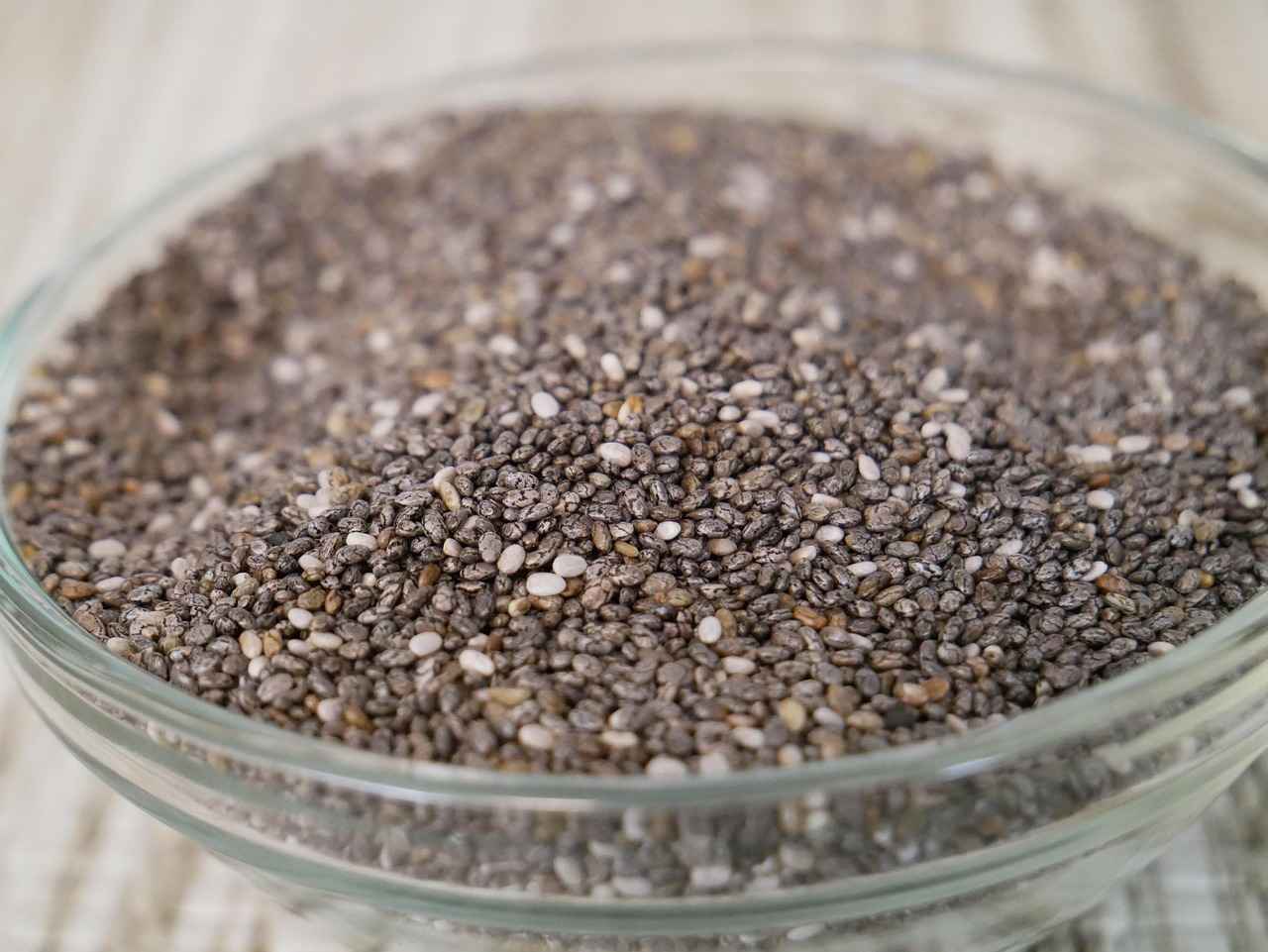
Are There Any Side Effects of Chia Seeds?
Chia seeds have gained immense popularity in recent years due to their numerous health benefits. However, as with any food, it’s crucial to understand the potential side effects associated with their consumption. This article delves into the possible side effects of chia seeds, their recommended serving sizes, and who should exercise caution when including them in their diet.
While chia seeds are generally considered safe for most individuals, some people may experience digestive discomfort if consumed in excess. This discomfort can manifest as bloating, gas, or even diarrhea. The high fiber content in chia seeds can be beneficial for digestion, but suddenly increasing fiber intake can lead to complications for some.
Chia seeds are rich in soluble fiber, which absorbs water and expands in the stomach. This gel-like consistency is great for promoting a feeling of fullness, but if consumed in large quantities without adequate hydration, it can cause digestive distress. Therefore, it is essential to maintain a balance.
The typical recommended serving size for chia seeds is about 1-2 tablespoons per day. This amount allows you to reap the health benefits without overwhelming your digestive system. It’s advisable to start with a smaller serving and gradually increase it to see how your body responds.
- Individuals with swallowing difficulties should be cautious, as dry chia seeds can expand in the throat.
- Those with gastrointestinal issues, such as irritable bowel syndrome (IBS), may find that chia seeds exacerbate their symptoms.
- People taking blood-thinning medications should consult a healthcare provider, as chia seeds can have a mild blood-thinning effect due to their omega-3 fatty acid content.
To enjoy chia seeds while minimizing the risk of side effects, consider the following tips:
- Hydrate: Always soak chia seeds in water or another liquid before consumption. This allows them to expand and reduces the risk of digestive issues.
- Gradual Introduction: If you’re new to chia seeds, start with a small amount and gradually increase it to allow your digestive system to adjust.
- Mix with Other Foods: Incorporating chia seeds into smoothies, yogurt, or oatmeal can help mitigate any potential digestive discomfort.
In summary, while chia seeds are a powerhouse of nutrition, it is essential to consume them in moderation. Understanding the right serving size and being aware of your body’s responses can help you enjoy their benefits without adverse effects. Always consult with a healthcare professional if you have any concerns or underlying health conditions before adding chia seeds to your diet.
Recommended Serving Size
When it comes to incorporating chia seeds into your diet, understanding the is crucial for maximizing their health benefits while minimizing potential digestive discomfort. A typical serving size of chia seeds is about 1-2 tablespoons. This amount is not only manageable for most people but also offers a wealth of nutritional advantages.
Chia seeds are incredibly nutrient-dense, packed with essential fatty acids, protein, fiber, and various micronutrients. By consuming the recommended serving size, you can enjoy these benefits without overwhelming your digestive system. The high fiber content in chia seeds can promote feelings of fullness, which is particularly beneficial for those looking to manage their weight. However, it’s important to gradually introduce chia seeds into your diet, especially if you’re not accustomed to a high-fiber intake.
Here are some key points to consider regarding the recommended serving size:
- Digestive Health: A serving size of 1-2 tablespoons allows your body to adjust to the increased fiber without causing bloating or discomfort.
- Hydration: When soaked in water, chia seeds expand and form a gel-like consistency. This not only aids in digestion but also helps keep you hydrated.
- Versatility: This serving size is perfect for adding to smoothies, oatmeal, or yogurt, enhancing the nutritional profile of your meals.
It’s worth noting that while chia seeds are generally safe for most individuals, those with certain health conditions, such as swallowing difficulties or gastrointestinal disorders, should consult a healthcare professional before incorporating them into their diet. For these individuals, even the recommended serving size might be too much.
In addition to the serving size, consider the frequency of consumption. Incorporating chia seeds into your diet a few times a week can provide substantial health benefits without the risk of digestive issues. Experimenting with different recipes can also help you find enjoyable ways to include chia seeds in your meals.
To summarize, the recommended serving size of 1-2 tablespoons of chia seeds is a practical guideline that allows you to reap their numerous health benefits without overwhelming your digestive system. As you explore various ways to enjoy chia seeds, remember to listen to your body and adjust your intake as needed. This approach will help you maintain a balanced diet while enjoying the unique advantages that chia seeds offer.
Who Should Avoid Chia Seeds?
Chia seeds are often hailed as a superfood, packed with nutrients and health benefits. However, it is crucial to recognize that they may not be suitable for everyone. In this section, we will explore who should avoid chia seeds and why consulting a healthcare professional is essential for certain individuals.
While chia seeds are generally safe for most people, there are specific groups who may experience adverse effects. These include:
- Individuals with Swallowing Difficulties: Chia seeds can absorb a significant amount of water, expanding to create a gel-like consistency. For those with swallowing difficulties, this can pose a choking hazard. It’s essential to ensure that the seeds are adequately soaked or ground before consumption.
- People with Gastrointestinal Issues: Conditions such as irritable bowel syndrome (IBS), Crohn’s disease, or other digestive disorders may be exacerbated by the high fiber content in chia seeds. Introducing them into the diet should be done cautiously and under medical supervision.
- Allergy Sufferers: Although rare, some individuals may be allergic to chia seeds. Symptoms can range from mild to severe, including rash, itching, or gastrointestinal distress. Anyone with a history of food allergies should consult a healthcare provider before trying chia seeds.
Before adding chia seeds to your diet, it is advisable for individuals in the aforementioned categories to consult a healthcare professional. A medical expert can provide personalized advice based on your health history and current conditions. This step is crucial to ensure that you do not inadvertently worsen any existing issues.
Even for those without existing health conditions, chia seeds can cause side effects if consumed in excessive amounts. Some common side effects include:
- Digestive Discomfort: Overconsumption may lead to bloating, gas, or diarrhea due to the seeds’ high fiber content.
- Allergic Reactions: As mentioned, while rare, allergies can occur and may require immediate medical attention.
If you are cleared by a healthcare professional to consume chia seeds, consider the following safe practices:
- Start Small: Begin with a small amount, such as one teaspoon, to assess how your body reacts.
- Hydrate: Always soak chia seeds in water or another liquid before consumption to prevent them from expanding in the throat.
- Monitor Your Body’s Response: Pay attention to any changes in your digestive health or overall well-being after consuming chia seeds.
Chia seeds can be a valuable addition to a healthy diet, but they are not suitable for everyone. Individuals with specific medical conditions, especially those related to swallowing or digestion, should exercise caution and seek professional guidance. By doing so, you can enjoy the benefits of chia seeds without compromising your health.
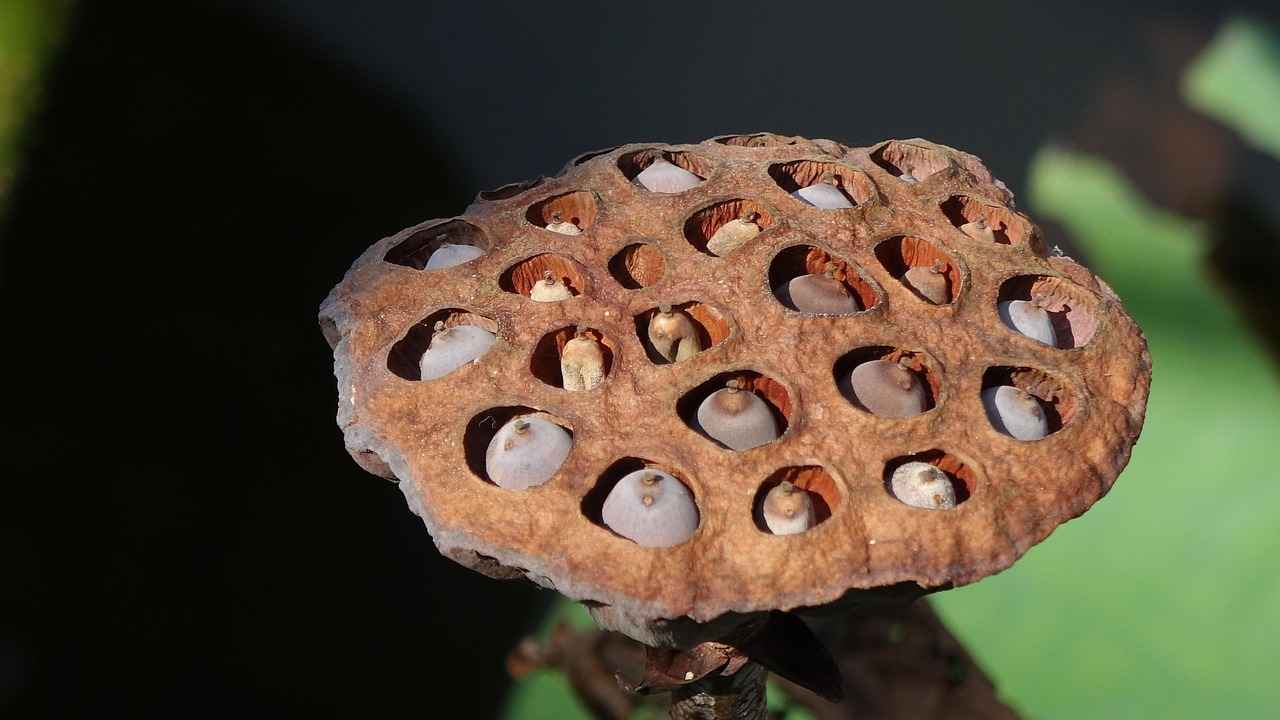
How to Store Chia Seeds for Maximum Freshness?
Proper storage of chia seeds is crucial to maintain their freshness and nutritional value. These tiny seeds, packed with essential nutrients, can lose their potency if not stored correctly. Here, we will explore the best practices for ensuring your chia seeds remain fresh and effective for as long as possible.
Why Is Proper Storage Important?
Chia seeds are rich in omega-3 fatty acids, fiber, and various micronutrients. However, exposure to light, heat, and moisture can lead to spoilage, diminishing their health benefits. Storing them properly can help extend their shelf life and maintain their quality.
Best Practices for Storing Chia Seeds
- Use Airtight Containers: Always store chia seeds in airtight containers. This prevents exposure to air, which can cause oxidation and spoilage.
- Choose the Right Location: Keep your chia seeds in a cool, dark place, such as a pantry or cupboard. Avoid areas that experience temperature fluctuations, like near the stove or oven.
- Refrigeration: For those who buy chia seeds in bulk or want to ensure maximum freshness, consider storing them in the refrigerator. This can significantly extend their shelf life.
How Long Do Chia Seeds Last?
When stored properly, chia seeds can last for up to two years. However, it’s essential to check their appearance and smell regularly. Fresh chia seeds should have a mild, nutty aroma and a consistent appearance. If they develop an off smell or unusual color, it’s best to discard them.
Signs of Spoiled Chia Seeds
It’s important to recognize when chia seeds may have gone bad. Here are a few signs to look out for:
- Off Odor: A strong or rancid smell indicates spoilage.
- Change in Texture: If the seeds feel sticky or clump together, they may have absorbed moisture.
- Discoloration: Any significant change in color can be a sign that the seeds are no longer fresh.
Can You Freeze Chia Seeds?
Yes, chia seeds can be frozen to preserve their freshness. If you choose to freeze them, ensure they are in an airtight container to prevent freezer burn. When you’re ready to use them, simply take out the desired amount and let them thaw at room temperature.
In Summary
Storing chia seeds properly is essential for maintaining their nutritional benefits and ensuring they remain safe to consume. By following the best practices outlined above, you can enjoy the full advantages of chia seeds in your diet. Remember to check for freshness regularly and consider refrigeration or freezing for long-term storage. With the right care, your chia seeds will remain a valuable addition to your health regimen.
Best Practices for Storing Chia Seeds
When it comes to enjoying the numerous health benefits of chia seeds, proper storage is essential. These tiny seeds, packed with nutrients, can lose their quality if not stored correctly. Here, we delve into the to ensure they remain fresh and effective for your health.
Chia seeds are rich in omega-3 fatty acids, fiber, and antioxidants, making them a valuable addition to your diet. However, improper storage can lead to oxidation and spoilage, diminishing their nutritional value. By following the right storage techniques, you can maintain their quality and extend their shelf life.
- Airtight Containers: Always store chia seeds in airtight containers. This prevents exposure to air, which can lead to rancidity and spoilage.
- Cool, Dark Places: Place the container in a cool, dark pantry or cupboard. Heat and light can degrade the seeds, so keeping them away from direct sunlight is crucial.
- Refrigeration: For long-term storage, consider keeping chia seeds in the refrigerator. This helps preserve their freshness and prevents any potential spoilage.
To maintain the integrity of chia seeds, avoid the following:
- Moisture: Exposure to moisture can cause chia seeds to clump together or develop mold. Always ensure your hands and utensils are dry when handling them.
- Heat: Storing chia seeds near the stove or in warm areas can lead to faster degradation. Keep them in a temperature-controlled environment.
- Bulk Storage: While buying in bulk can be cost-effective, transferring chia seeds into smaller containers for daily use can help maintain their freshness.
When stored properly, chia seeds can last for up to two years. It is advisable to periodically check the seeds for any signs of spoilage, such as an off smell or unusual appearance. If you notice any changes, it’s best to discard them.
Knowing how to identify spoiled chia seeds is vital for your health. Here are some signs to watch for:
- Off Smell: Fresh chia seeds have a neutral scent. If they smell rancid or off, it’s time to throw them away.
- Color Changes: If the seeds have darkened or changed color significantly, they may no longer be safe to consume.
- Clumping: While some clumping is normal when chia seeds absorb moisture, excessive clumping can indicate spoilage.
Yes, you can freeze chia seeds to extend their shelf life even further. Just make sure to store them in an airtight container to avoid freezer burn. When you’re ready to use them, simply take out the desired amount and allow them to thaw at room temperature.
By following these best practices for storing chia seeds, you can ensure that they remain fresh and beneficial for your health. Proper storage not only preserves their nutritional value but also enhances your overall experience with these super seeds. Incorporating them into your diet will be much more enjoyable when you know they are at their best!
How Long Do Chia Seeds Last?
When it comes to storing chia seeds, understanding their shelf life is crucial for maintaining their nutritional value and ensuring your health. These tiny seeds, packed with essential nutrients, can be a great addition to your diet, but only if they are fresh. So, how long do chia seeds last, and what are the best practices for keeping them fresh?
When stored correctly, chia seeds can last for up to two years. This longevity is largely due to their low moisture content, which helps prevent the growth of mold and bacteria. However, the actual shelf life can vary based on several factors, including storage conditions and the initial quality of the seeds.
- Storage Conditions: Chia seeds should be kept in a cool, dark place to maximize their lifespan. Exposure to light, heat, and moisture can significantly reduce their quality.
- Container Type: Using an airtight container is essential. Glass jars or vacuum-sealed bags are excellent options for keeping air and moisture out.
- Initial Quality: Always purchase chia seeds from reputable sources. Fresh seeds will have a longer shelf life than those that have been sitting on store shelves for extended periods.
Regularly checking the appearance and smell of your chia seeds can help determine their freshness. Here are some tips:
- Visual Inspection: Fresh chia seeds should be shiny and have a consistent color. If you notice any discoloration or a dull appearance, it may indicate spoilage.
- Smell Test: Fresh chia seeds have a mild, nutty aroma. If they smell rancid or off, it’s best to discard them.
To ensure the longevity of your chia seeds, follow these best practices:
- Keep Them Cool: Store chia seeds in a cool place, such as a pantry or refrigerator, to slow down the degradation process.
- Avoid Moisture: Ensure that your storage container is dry before adding chia seeds. Moisture can lead to clumping and spoilage.
- Label and Date: When purchasing chia seeds, label your container with the purchase date. This can help you track their freshness over time.
If you find that your chia seeds have passed their prime, it’s essential to assess their condition before using them. While slightly expired seeds may still be safe to consume, they might lack the nutritional benefits and flavor. If you notice any signs of spoilage, such as an off smell or unusual texture, it’s best to err on the side of caution and dispose of them.
In conclusion, understanding how long chia seeds last and how to store them properly can significantly enhance your health journey. By following the guidelines outlined above, you can enjoy the numerous benefits of chia seeds while ensuring their freshness and quality.
Frequently Asked Questions
- What are the health benefits of drinking chia seed water?
Drinking chia seed water can boost hydration and provide essential nutrients like omega-3 fatty acids and fiber. These nutrients can improve digestion, enhance energy levels, and even promote heart health.
- How do I prepare chia seed water?
Preparing chia seed water is super simple! Just mix 1 tablespoon of chia seeds with 10 ounces of water, let it soak for about 10-15 minutes, and enjoy the gel-like consistency!
- Can chia seeds help with weight loss?
Absolutely! Chia seeds are high in fiber, which helps you feel full longer. This can lead to reduced calorie intake and support your weight loss goals.
- Are there any side effects of consuming chia seeds?
While chia seeds are generally safe, some people may experience digestive discomfort if they consume too much. It’s best to stick to 1-2 tablespoons to avoid any issues.
- How should I store chia seeds for freshness?
To keep your chia seeds fresh, store them in an airtight container in a cool, dark place. This can help prolong their shelf life for up to two years!

